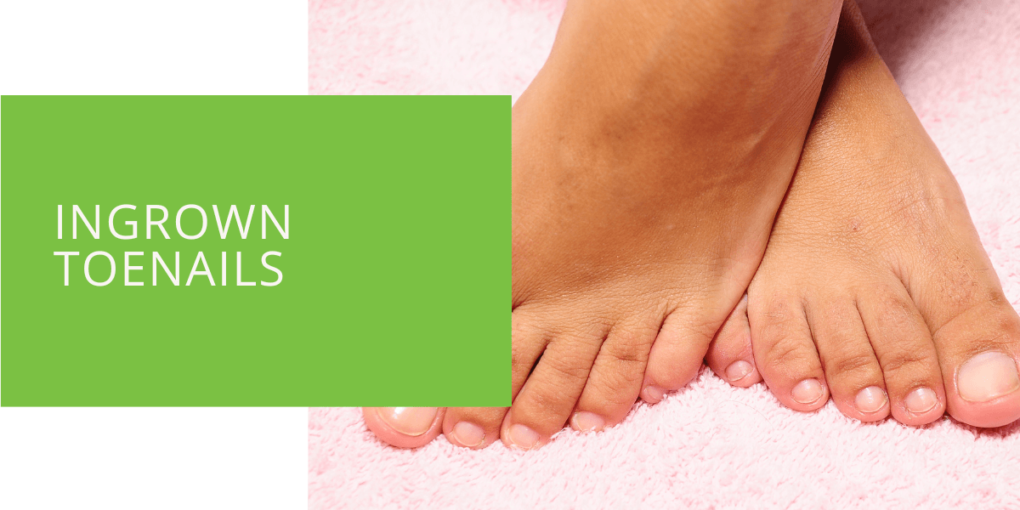Ingrown Toenails: Causes, Symptoms & Treatment
Ingrown toenails can be a painful and frustrating problem for many people. An ingrown toenail occurs when the nail grows into the skin surrounding it, often on the sides of the big toe. Left untreated can lead to inflammation, pain, and even infection. This article will explore the causes, symptoms, and treatment options for ingrown toenails.
What is an Ingrown Toenail?
Definition
An ingrown toenail, also known as onychocryptosis, is a condition in which the toenail grows into the surrounding skin rather than growing straight across. This can cause the skin to become inflamed and painful; in severe cases, the toenail may even become infected. Ingrown toenails are most common on the big toe but can also occur on other toes.
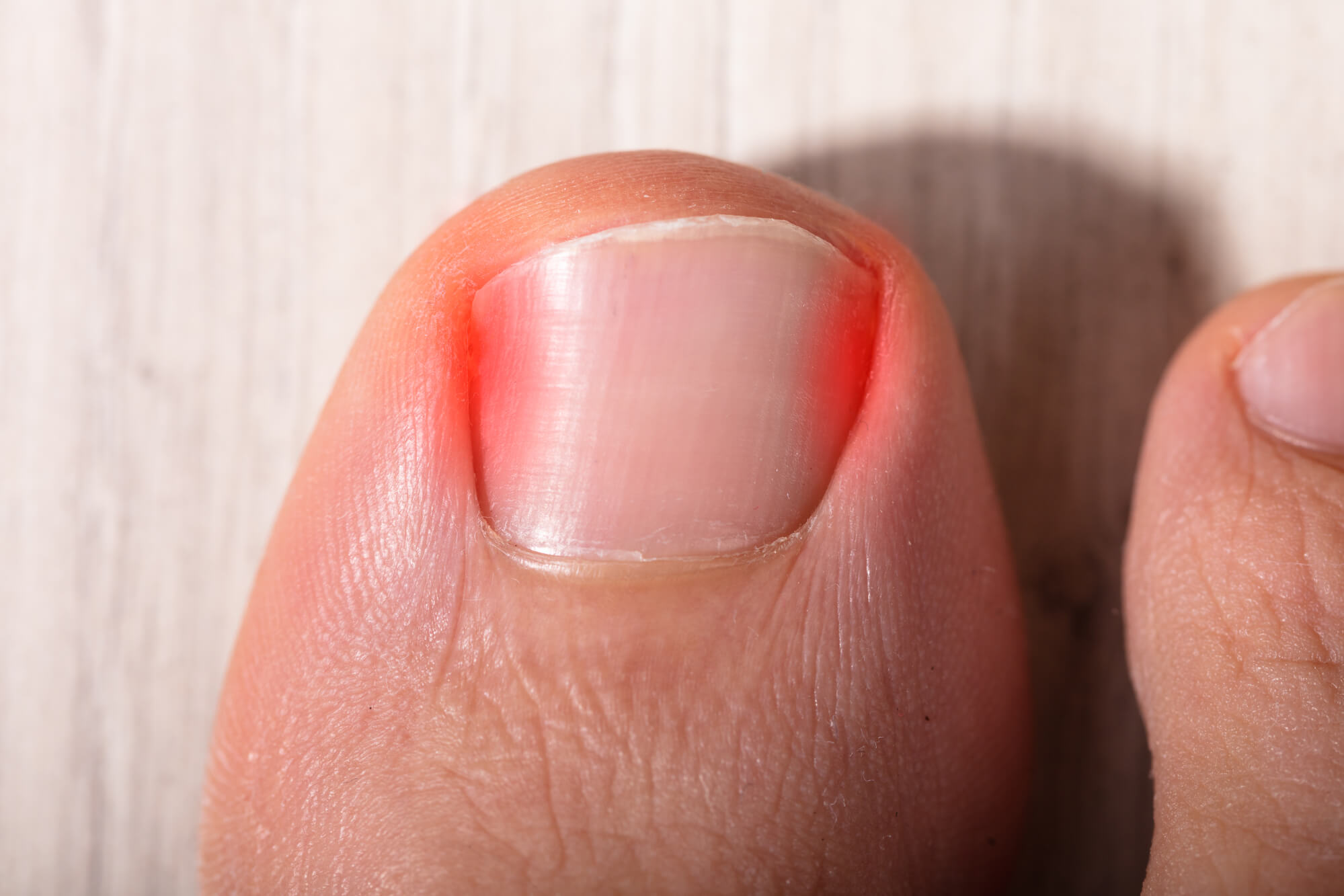
Causes
There are several possible causes of ingrown toenails. Some of the most common causes include:
- Cutting toenails too short: When you cut your toenails too short, the edges may curve down and grow into the skin.
- Wearing shoes that don't fit properly: Tight or poorly fitting shoes can pressure the toes, causing the nails to grow into the skin.
- Trauma to the nails: Injuries or accidents that cause trauma to the nails can increase the risk of an ingrown toenail.
- Genetics: Some people are more prone to developing ingrown toenails due to genetics.
- Poor circulation: Poor circulation in the feet can make it more difficult for the nails to grow properly.
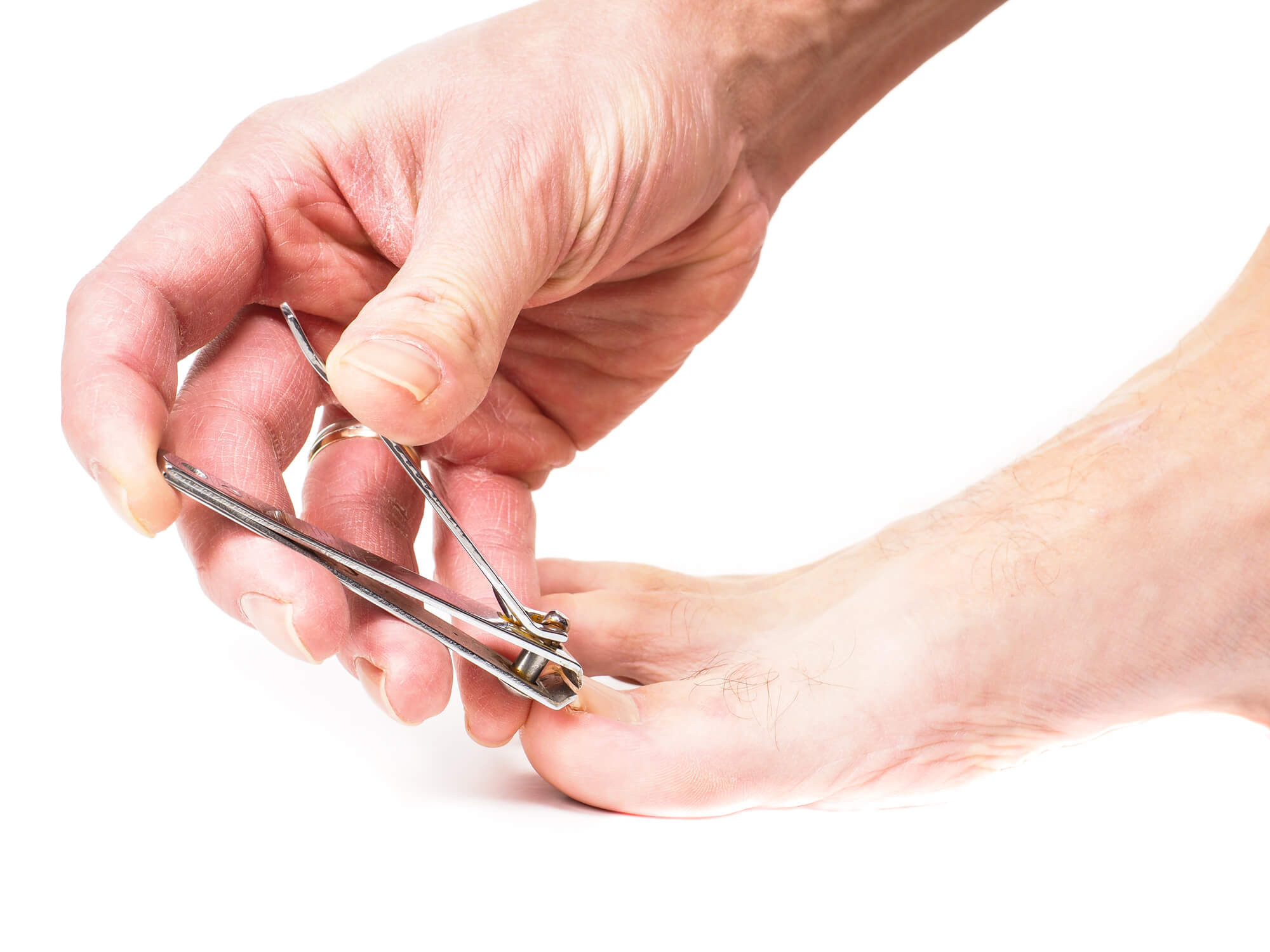
Symptoms of an Ingrown Toenail
Pain and Swelling
The most common symptom of an ingrown toenail is pain and swelling around the affected area. The skin may also feel tender to the touch.
Redness and Infection
In severe cases, an ingrown toenail may become infected. Signs of an infected toenail include redness, warmth, and drainage. In some cases, an abscess (a collection of pus) may form around the nail.
Treatment Options for Ingrown Toenails
Home Remedies
Mild cases of ingrown toenails can often be treated at home using simple remedies such as:
- Soaking the foot in warm water: Soaking the foot in warm water can help to soften the skin and nail, making it easier to remove the ingrown portion of the nail.
- Using a piece of cotton or dental floss to lift the nail: Gently placing a piece of cotton or dental floss under the ingrown nail can help to lift it up and away from the skin.
- Wearing shoes that fit properly: Wearing shoes that fit properly can help to prevent further irritation of the ingrown nail.
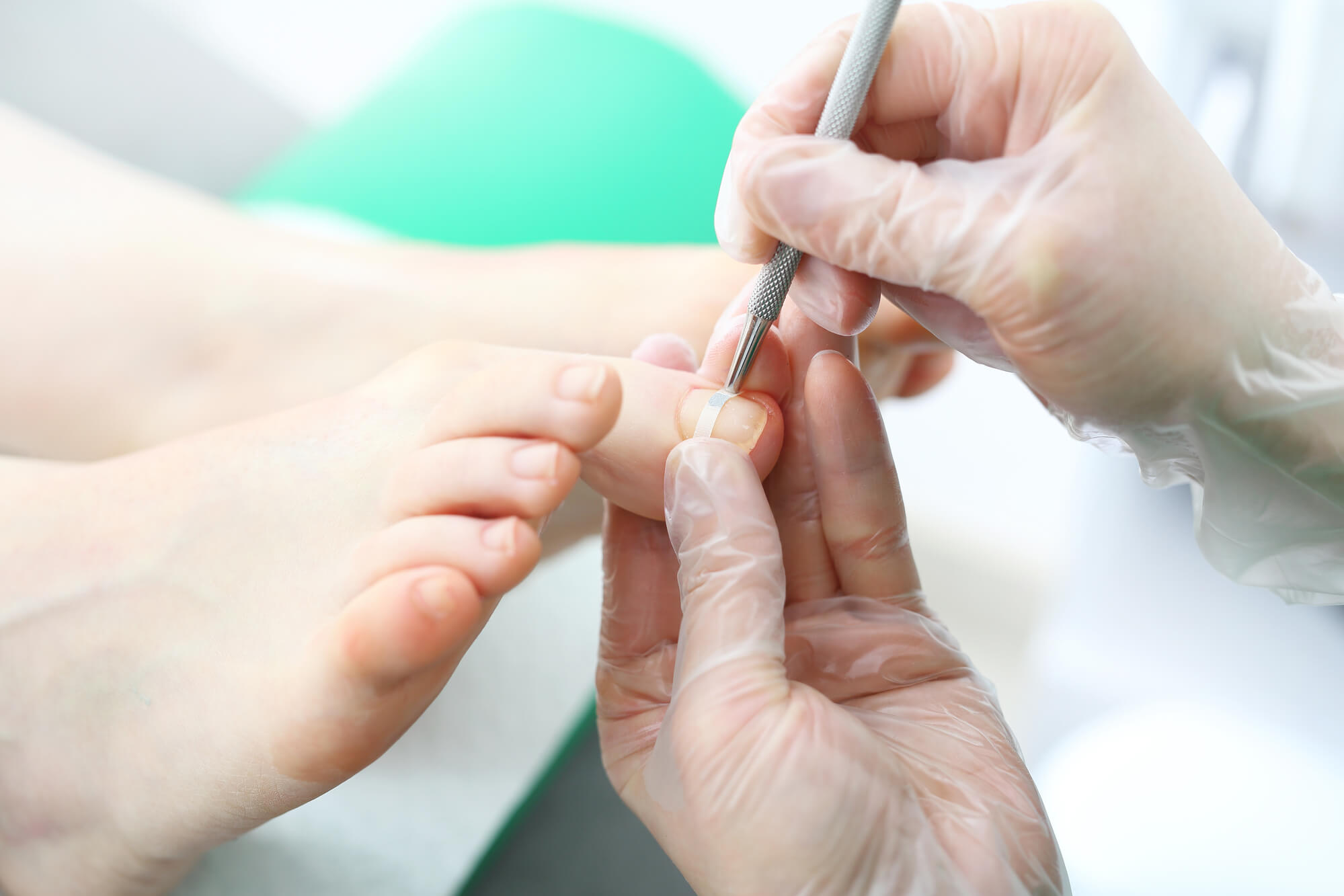
Medications
If home remedies are insufficient to treat an ingrown toenail, a podiatrist (a medical professional specializing in foot care) may recommend using antibiotics to treat any infection and reduce inflammation.
Surgical Intervention
In some cases, surgical intervention may be necessary to treat an ingrown toenail. A podiatrist may perform one of the following procedures:
- Nail avulsion: The podiatrist will remove the ingrown portion of the nail and the nail bed during a nail avulsion. The nail will eventually grow back, but it may take several months to regrow fully.
- Nail ablation: The podiatrist will remove the entire nail, including the nail bed, during a nail ablation. The nail may not grow back at all, or it may take several years to regrow.
- Nail wedge resection: During a nail wedge resection, the podiatrist will remove a small wedge-shaped piece of the nail, leaving the nail bed intact. The nail will eventually grow back, but it may take several months to regrow fully.
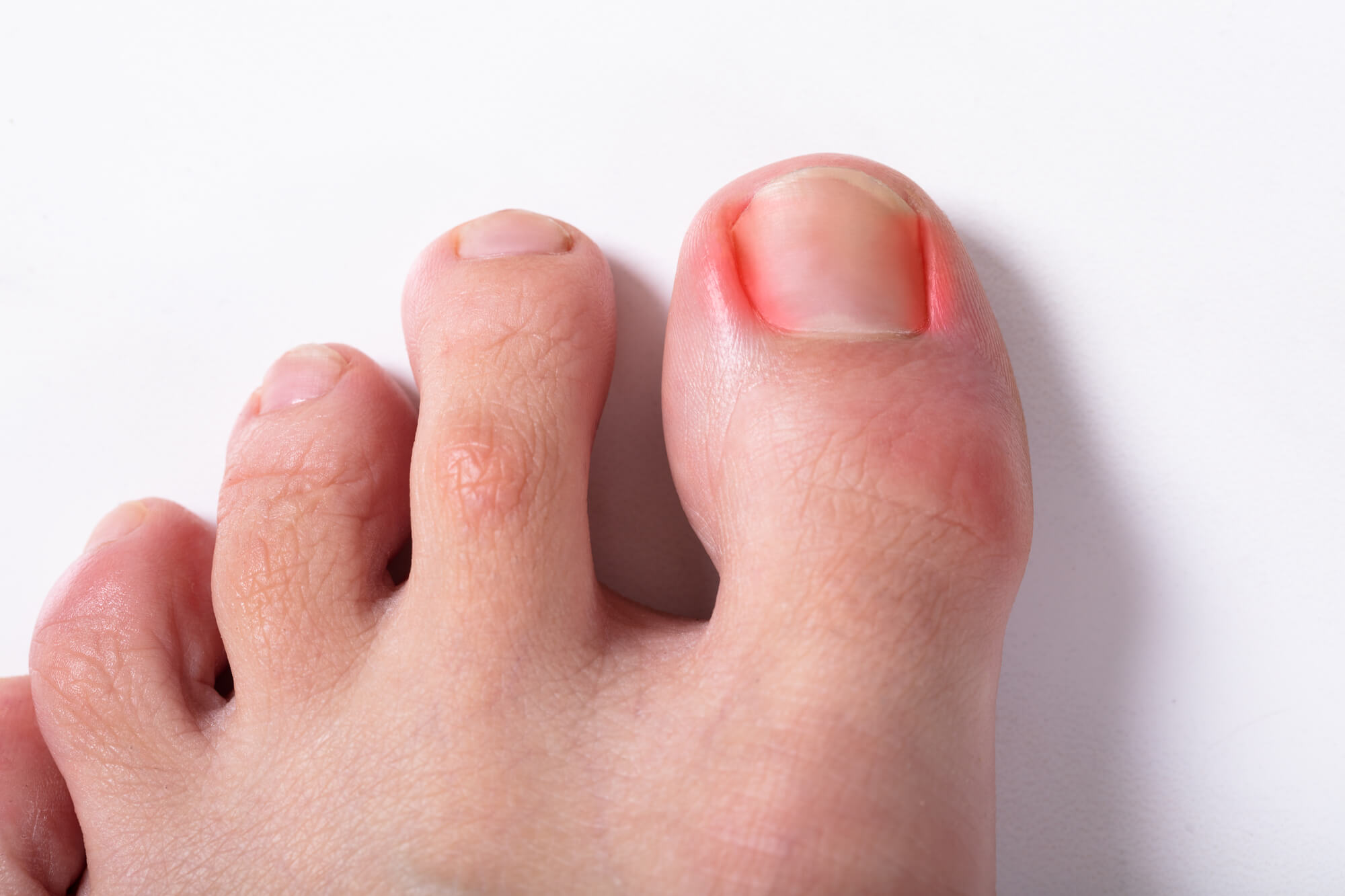
Preventing Ingrown Toenails
Proper Nail Trimming
One of the easiest ways to prevent ingrown toenails is by properly trimming your nails. Here are some tips for trimming your toenails to prevent ingrown toenails:
- Cut straight across: When trimming your toenails, cut them straight across rather than rounding the corners.
- Don't cut them too short: Avoid cutting your toenails too short, as this can increase the risk of ingrown toenails.
Wearing the Right Shoes
Wearing shoes that fit properly can also help to prevent ingrown toenails. Make sure to choose shoes with plenty of room in the toe box to allow your toes to move and breathe. Avoid shoes that are too tight or constricting.
Avoiding Trauma to The Nails
Avoiding activities that could cause your nails trauma can also help prevent ingrown toenails. For example, if you play sports involving running or jumping, wear shoes that provide proper support and protection for your feet.
Conclusion
Ingrown toenails can be a painful and frustrating problem, but proper treatment and prevention can be managed. If you are experiencing symptoms of an ingrown toenail, it is important to seek the help of a podiatrist to ensure proper treatment and prevent complications. Remember to trim your toenails properly, wear shoes that fit well, and avoid activities that could cause trauma to your nails to help prevent ingrown toenails from occurring.
FAQ
What causes ingrown toenail symptoms?
Ingrown toenail symptoms are caused by the nail growing into the skin surrounding it rather than growing straight across. This can cause the skin to become inflamed and painful; in severe cases, the toenail may even become infected.
What is the most common cause of an ingrown toenail?
The most common cause of an ingrown toenail is cutting the toenails too short. When you cut your toenails too short, the edges may curve and grow into the skin.
What is the fastest way to get rid of an ingrown toenail?
The fastest way to get rid of an ingrown toenail will depend on the severity of the condition. For mild cases, home remedies such as soaking the foot in warm water and using a piece of cotton or dental floss to lift the nail may be sufficient. For more severe cases, it may be necessary to seek the help of a podiatrist, who may prescribe medications or recommend surgical intervention.
What is the cure for ingrown toenails?
There is no "cure" for ingrown toenails, but they can be treated and managed with proper care. Home remedies, medications, and surgical intervention can all be used to treat ingrown toenails.
Can I remove an ingrown toenail myself?
It is generally not recommended to try to remove an ingrown toenail yourself, as this can be very painful and may even cause further damage to the nail or surrounding skin. If you are experiencing symptoms of an ingrown toenail, it is best to seek the help of a podiatrist, who can properly diagnose and treat the condition.

